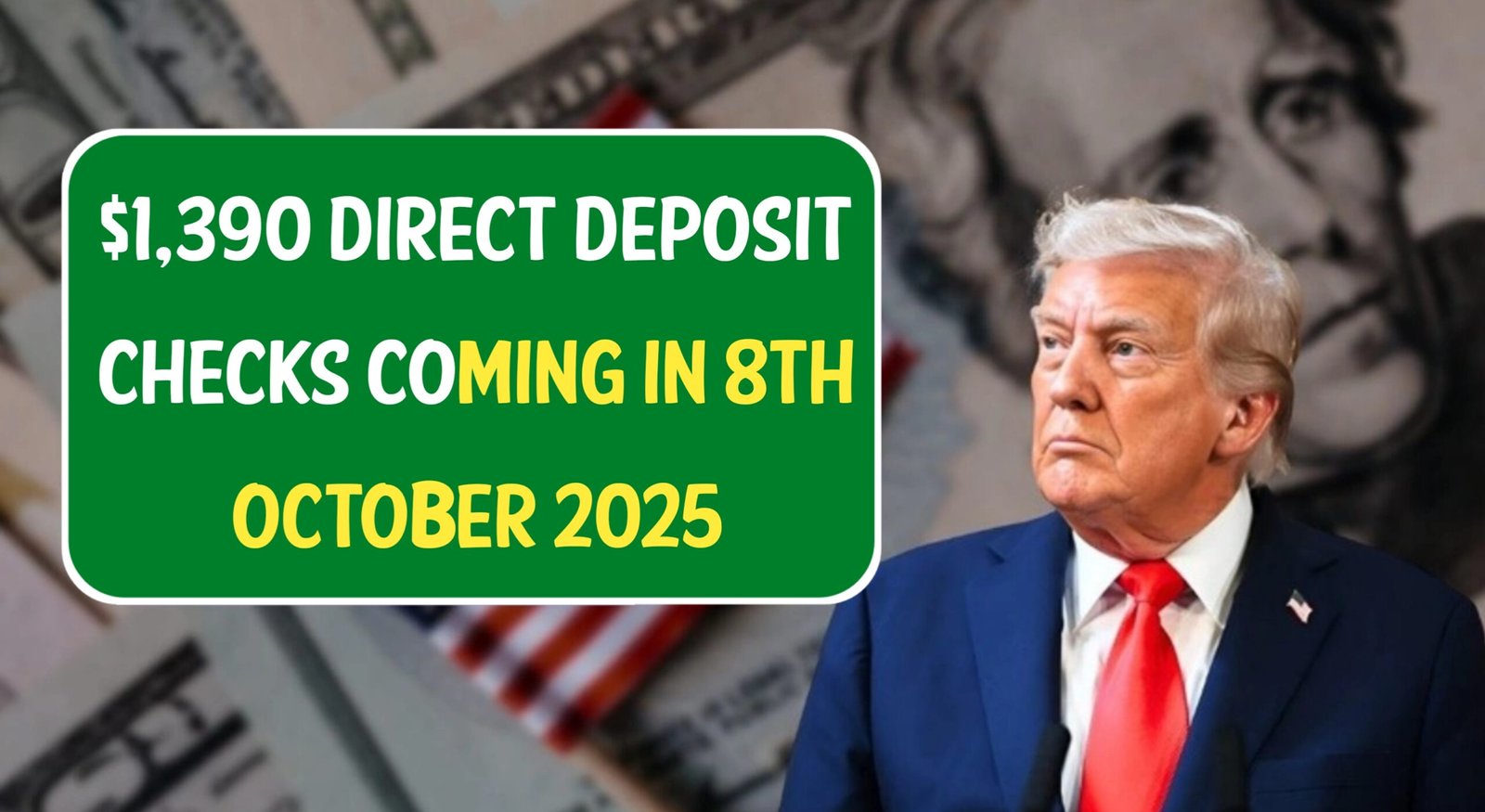Many Americans are preparing for the upcoming direct deposit payments scheduled for October 8th, 2025. If you’ve been waiting for a financial boost, this news may be especially relevant. Government programs and relief initiatives are increasingly using direct deposits to quickly reach eligible citizens, ensuring timely financial support.
This article will explain who qualifies, how the process works, and what you need to know to ensure you receive your payment without delays.
Who qualifies for the $1,390 direct deposit?
Eligibility for these payments is determined based on multiple factors including income level, age, and participation in certain federal or state assistance programs. While exact eligibility criteria may vary depending on the specific program issuing the funds, common factors include:
- Income level – Generally, households under a specified annual income threshold are prioritized.
- Participation in government assistance programs – Recipients of Social Security, unemployment benefits, or other federal aid programs may automatically qualify.
- Bank account on file – Direct deposit payments require a valid bank account to receive the funds.
Eligible recipients typically do not need to take additional steps beyond verifying their account information, as payments are processed automatically.
How direct deposit works
Direct deposit is a fast and secure method for receiving payments. Instead of waiting for a physical check, the funds are transferred directly to your bank account. The process involves:
- Verification of eligibility – Government agencies cross-check their records to ensure recipients meet all requirements.
- Payment processing – Funds are prepared and scheduled for deposit on the designated date, in this case, October 8th, 2025.
- Notification – Some banks may notify account holders once the deposit is made, although this can vary.
Direct deposit is generally safer than paper checks, as it eliminates risks like lost or stolen checks and provides immediate access to funds.
Programs issuing $1,390 checks
These payments may come from various federal and state initiatives aimed at providing financial support. Examples include:
- Economic impact or stimulus programs – Designed to provide relief to qualifying households.
- Social Security or retirement benefit adjustments – Sometimes additional payments are issued to seniors or those on fixed incomes.
- Unemployment benefit enhancements – Some states increase payments temporarily to help those impacted by economic challenges.
It’s important to stay informed about the specific program issuing your payment, as rules and eligibility can differ.
Checking your eligibility
To ensure you receive your $1,390 direct deposit, check your eligibility using official sources. You can:
- Visit official government websites – Agencies often provide eligibility tools or calculators.
- Check your account notifications – Many banks partner with federal programs to alert customers about upcoming deposits.
- Review your correspondence – Notices sent by mail or email may include instructions or confirmation regarding your payment.
Always avoid unofficial sources or third-party websites claiming to guarantee direct deposits, as these may be scams.
What to do if you don’t have a bank account
If you are eligible but do not have a bank account, some programs provide alternative methods such as prepaid debit cards or mailed checks. You can also consider opening a bank account to receive funds directly in the future. Direct deposit is faster and often safer than other methods, so it is highly recommended if possible.
Timing of the payment
The $1,390 payment is scheduled for October 8th, 2025. However, banks may process the deposit slightly earlier or later depending on weekends, holidays, or internal processing times. Typically, funds are available immediately once deposited, but it is wise to check with your bank if you experience delays.
Preparing for the deposit
To avoid issues, recipients should:
- Verify bank account details – Ensure routing and account numbers are correct.
- Monitor your account – Watch for the deposit and any notifications.
- Understand tax implications – Some payments may be taxable; check with a tax advisor if unsure.
Being prepared can help you access the funds quickly and use them effectively for essential expenses.
Common questions about direct deposits
Q: Will I receive the payment if I recently moved?
A: If your bank account information remains unchanged, you should receive the payment. If you’ve recently changed banks, update your details with the issuing agency as soon as possible.
Q: Can I request a paper check instead?
A: Some programs allow this, but direct deposit is generally preferred for speed and security.
Q: Is there a way to track my payment?
A: Official program websites often provide tracking tools. You can also contact your bank to confirm receipt once the deposit date arrives.
Maximizing the benefit of your $1,390 payment
Once you receive the funds, consider using them wisely. Some ideas include:
- Cover essential bills – Rent, utilities, and groceries should be priorities.
- Emergency savings – Setting aside a portion can help with unexpected expenses.
- Debt reduction – Using funds to pay down high-interest debt can provide long-term financial relief.
Strategic use of your payment can help stretch it further and provide lasting benefits beyond the immediate deposit.
Avoiding scams
Unfortunately, direct deposit announcements often attract scammers. Tips to protect yourself:
- Never share your bank account information with unknown callers or emails.
- Verify the source – Always use official government websites.
- Ignore unsolicited messages claiming you can “speed up” your payment.
Remaining vigilant ensures your payment reaches you safely without falling prey to fraud.
Summary
The $1,390 direct deposit scheduled for October 8th, 2025, is an important opportunity for eligible Americans to receive financial support. By understanding eligibility, preparing your account, and staying informed, you can ensure a smooth process.
This payment, whether part of a government stimulus program, Social Security adjustment, or other aid initiative, can provide meaningful relief and support for your household. Take steps now to verify your eligibility, confirm your banking information, and avoid scams to make the most of this upcoming deposit.
